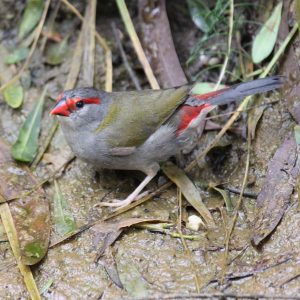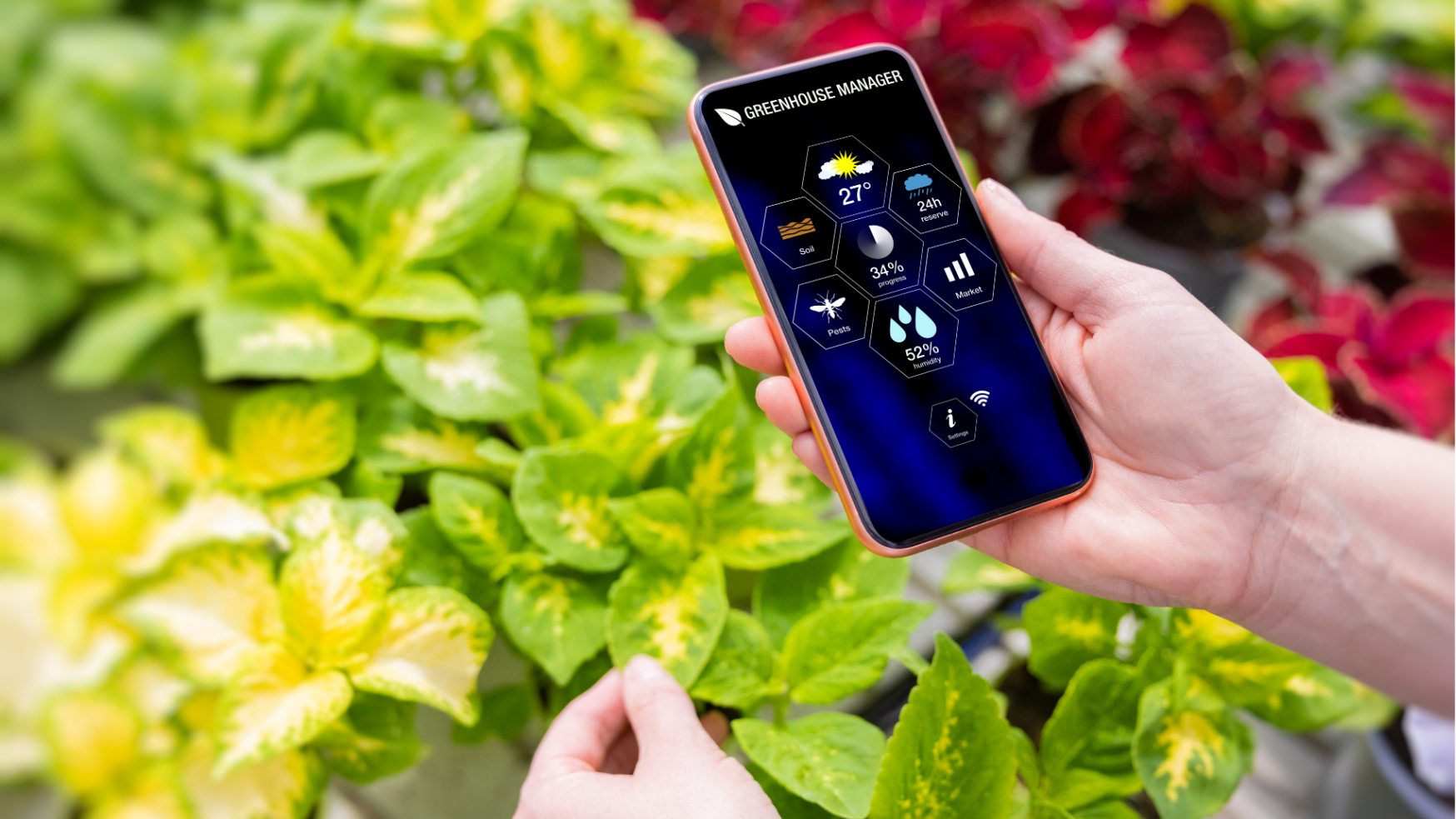It’s wonderful to watch and identify all manner of birds who have chosen to pop into the garden for a drink and a stickybeak. From tiny, cheerful little wrens and pardalotes, to the cheeky parrots, gorgeous honeyeaters and bossy wattlebirds, it’s good to share space with our feathered friends. Just like a pot of basil and a shady spot, nothing makes a garden come alive like the twitter and chatter of a variety of Australian birds. They are essential in the garden, and not just to keep us backyard birdwatchers entertained, and there are many ways to attract them!
Get To Know The Neighbours
First things first: you need to know what kind of birds could be expected in your garden. There is no point designing a habitat for a bird that hasn’t been seen in your neighbourhood for ages – or ever! Contact local bird watching groups to get an idea of what you should be attracting, and what is common to your area. You might be surprised. Some suburban gardens have been visited by over 46 species of bird over the years… that’s impressive, and, with the right planning and processes, you may just be able to have that as well!

What about the cat?
Before adopting strategies to attract birds to your garden it’s worth thinking about cats. Are you enticing birds to their death? Suburban, rural and feral cats together kill many thousands of birds each night across the country. So if you or your neighbours own cats some thought is required.
Studies on suburban cats have reported different results on the role of cats as opposed to change in habitat in the decline of bird species diversity in suburbs. Reports of the numbers of birds killed and the effectiveness of attaching bells to the cat’s collar vary. What is clear, however, is that suburban cats do kill many thousands of birds and the bells are probably not making much of a difference. Interestingly, there is new idea, backed by research, that when cats wear a rainbow-coloured cloth collar, somewhat similar to that worn by clowns, with reflective strips, bird kills are significantly reduced. Apparently, because birds have highly developed eyesight this collar alerts them to the presence of a cat. Maybe worth a try?
What About The Water?
A source of water is absolutely essential in attracting birds and can significantly increase the number of species you will see. But like owning a cat, providing water is not without issues, and there are a couple of things that need to be considered when providing H2O.

Firstly, is it safe to swim? Are birds who visit your bird bath (or equivalent) able to gain access, have a drink and a paddle without fear of getting picked off by predators such as cats? Bird baths or ponds (preferably multiple drinking sites) need to be located so that, if startled or threatened, the birds can dart for cover in an adjacent “prickly” bush. Elevated bird baths – either on a stand or suspended from a tree – can help make birds safer.
Secondly, bird baths should be shallow enough to allow birds to stand in them to clean their feathers. It’s also helpful to choose baths that have sloping sides or to put stones at the edge to provide gradual access to the water.
Thirdly, the water has to be continuous. Birds remember where water sources are, and will seek them out, so ensure they are full all year round, and make sure you get someone to top them up for you while you are on holidays. The Bird Observers Club of Australia recommends that a shallow bowl, kept topped up, is ideal, and preferred by birds over deep ponds. Ideally, backyards should have a couple of water sources, each located by plants that will provide a nice bit of cover for smaller birds. They should be regularly cleaned out as well, to avoid transfer of disease and illness.
Is there a need to feed?
There is much debate about encouraging birds to your backyard through feeding! In the northern hemisphere, bird feeding is quite acceptable, but in Australia the view has been that, as tempting as it may be to put a bowl of budgie seed on the porch and watch the birds flock, this really doesn’t do the birds any favours. In fact, store bought seed mixes can make native birds a bit unwell (despite what the packet may say), but this is only one reason that feeding is discouraged by the majority of bird fanciers.
Birds can become extremely dependent on handouts at your house, and, as you take your annual holidays to the beach, your regular customers are suddenly without their main source of food for a couple of weeks, leading to… well, I think you know how you’d feel without food for a couple of weeks!
In addition, supplementary feeding creates further imbalance in delicate ecosystems, altering the natural behaviour of birds, favouring more aggressive birds in the backyard (while smaller birds in mixed feeding groups are more prone to predation) and assisting the spread of disease between birds. In short, it’s a contentious issue. Although throwing meat out for the Kookaburras or Magpies or putting out seed may seem to be encouraging birds to your garden, there will be no change in the diversity of species in the yard. In short, if you have Turtle Doves and Noisy Miners now, you’ll have more after feeding and perhaps even get introduced birds such as Common Starlings, Blackbirds, Indian Mynahs or House Sparrows.
Picking the Plants and Studying the Strata
So food may be out and the water’s in! Lets have a look at the flora required to encourage feathered fauna. Essentially, a backyard brimming with botanic biodiversity is the one most likely to attract a variety of birds, especially if the plants are locally native. We’re not suggesting you rush out and plant a whole swathe of enormous gum trees, although having some of these nearby does indeed help encourage the birds. The most important element of planting a bird habitat is to make sure all strata layers are accounted for. Strata layers are the differing layers of vegetation that essentially make up a habitat. As different birds (and other animals) live in different layers of vegetation, the more variety you can provide in the size and selection of plants you grow, the greater the variety of animals you may see turning up at your place. Different vegetation levels provide a diverse supply of food, shelter and safe spaces for birds, so consider a decent mix of ground covers, grasses, shrubs of varying sizes, and a couple of locally native tree species.
 It’s important to recognise that, like us, birds have different likes and dislikes when it comes to having a feed. Some birds are insectivorous, and will happily gobble away at all manner of creepy crawly critters, where as others are nectar lovers and seed swallowers. It’s important, when planning your plants, to account for all appetites, and select plants that provide nectar, host insects, and provide shelter, as well as planning for vertical and horizontal structure.
It’s important to recognise that, like us, birds have different likes and dislikes when it comes to having a feed. Some birds are insectivorous, and will happily gobble away at all manner of creepy crawly critters, where as others are nectar lovers and seed swallowers. It’s important, when planning your plants, to account for all appetites, and select plants that provide nectar, host insects, and provide shelter, as well as planning for vertical and horizontal structure.
The following is a list of Australian native plants that are recommended within the backyard bird garden. That said, it’s a great idea to check with your local indigenous plant nursery, bird observers group for their recommendations. As always, it’s incredibly important to avoid invasive plants, especially those with bird attracting fruits. Where species name only is mentioned, it is important to source locally native variations of these plants.
Grasses – Provide seed, shelter and nesting material
- Poa labillardieri – Common Tussock Grass
- Themeda triandra – Kangaroo Grass
- Austrodanthonia sp. – Wallaby Grass
Groundcovers and Wildflowers – Provide nectar, seed, shelter and host insects
- Dichondra repens – Kidney Weed
- Kennedia prostrata – Running Postman
- Banksia sp.
- Grevillea sp.
- Hibbertia sericea – Guinea Flower
- Chrysocephalum sp. – Everlastings
Shrubs – Provide nectar, seed, shelter and host insects
- Acacia sp. – Wattle
- Correa sp.
- Bursaria sp.
- Leptospermum sp.
- Melaleuca sp.
- Callistemon sp. – Bottlebrush
Trees – Provide nectar, seed, shelter, nesting sites and host insects
- Eucalyptus sp. – Gum Tree
- Leptospermum sp.
- Melaleuca sp.
- Acacia sp. – Wattle
Can the Chemicals
Alright, the plants sorted, so what else do we have to do to encourage beautiful birds to our patch? Well, it’s more a case of what not to do, especially when it comes to chemicals in the garden. Not all of us are completely at ease with “creepy-crawly-slimy-slithery-furry-flying” critters and insects in the garden, and tend to declare chemical warfare at the first sign of insect inhabitants. In order to keep a biodiverse, bird-friendly backyard, we need to seriously consider what chemicals we are using, and why. Insects and invertebrates (little tackers without backbones) are an incredibly important part of any ecosystem, and this includes mosquitoes, cockroaches, ants and spiders.
We have all heard of the butterfly effect, where a minor action in one location can have devastating “knock-on” effects elsewhere. Well, apply this to your backyard, where the sprinkling of ant granules or the spraying of pesticides could have a detrimental impact on not only the target insect, but a whole host of important invertebrates, with a further knock on to the critters that feed on these guys. A US study performed a few years back looked at about 80,000 dead birds that had been handed in to the Parks and Wildlife authorities in one state. Studies found that the bulk of these birds had been killed by pesticide poisoning, totally an astounding 65 million birds killed in the US each year. And it ain’t much better here! Current studies into the rate of bird death from chemical poisoning is expected to reveal similar results. Think carefully about chemical use, and, where possible, avoid it altogether. After all, a couple of holes in a few leaves is all part of nature!
So, what are you waiting for? Attract those birds, and get recording. Keep a bird identification book and a diary handy to record those sightings, and become active in a local bird group – it’s great fun, and you’ll be amazed how addictive it is!
Want more info? Check out these links:
Related Articles:
Managing Rats with IPM
“You dirty rat!” This phrase embodies the frustration many feel towards rats in the garden. These uninvited guests seem ever-present, scuttling along…
Citizen Science: A Pathway to Gardening Success and Biodiversity Conservation
In recent years, the realm of science has experienced a remarkable transformation, one that invites people from all walks of life to participate…


